Protect Daffodils In Pots From Repeated Freezing And Thawing Explains Janet Hickman

BULBS > DAFFODILS > CONTAINERS

Elizabeth is a Permaculture Garden Designer, Sustainability Consultant and Professional Writer, working as an advocate for positive change. She graduated from the University of St. Andrews with an MA in English and Philosophy and obtained a Diploma in Applied Permaculture Design from the Permaculture Association.
Reviewed By COLIN SKELLY

Colin is a Horticulturist and Horticultural Consultant with experience in a range of practical and managerial roles across heritage, commercial and public horticulture. He holds the Royal Horticultural Society’s Master of Horticulture award and has a particular interest in horticultural ecology and naturalistic planting for habitat and climate resilience.
Contributions From ANNE WRIGHT

Anne is the owner of Dryad Nursery, a Daffodil and Snowdrop specialist and nursery based in North Yorkshire here in the UK.

Janet is an accredited judge and judge instructor for national and local shows; she has also received the 2022 American Daffodil Society Silver Medal in recognition of her service.

Emily is a Gardening Writer, Photographer and Videographer from Derbyshire, UK. She is the Founder of Emily's Green Diary - a community of more than 75,000 people who share in her gardening journey.
IN THIS GUIDE
Daffodils are among the easiest, most popular and most reliable spring bulbs to grow in UK gardens.
They can work well in many different positions in a garden, and in a range of different garden schemes.
However, if you are short on space or don’t have a suitable planting location for these spring flowering bulbs where you live, you might be wondering whether you can grow daffodils in pots.
Are Daffodils Suitable For Containers?
The answer, of course, is yes.
Daffodils come in many different flower forms and colour variations, and almost all are wonderful choices for container cultivation.
Whether you are new to gardening or have been growing for years, you should have no difficulty in growing daffodils in pots.

You can grow them on their own for cheery splashes of spring colour, in a bulb lasagne, or in a wide range of mixed displays alongside other bulbs and plants.
“Many varieties need a cooling period in order to bloom,” explains Janet Hickman from the American Daffodil Society.
“For potted bulbs, they can be refrigerated or sheltered in outdoor storage, but they should be protected from repeated freezing and thawing.”
Make sure you know what is needed for your daffodil bulbs before planting in a pot.
Choosing Pots
When choosing a container for growing daffodils, there are a number of things that you should consider.
Of course, you need to think about which variety of daffodil you would like to grow.
It’s important to remember that some smaller types can be grown in small pots indoors or in little window boxes, while larger types will look better and do well in larger containers.
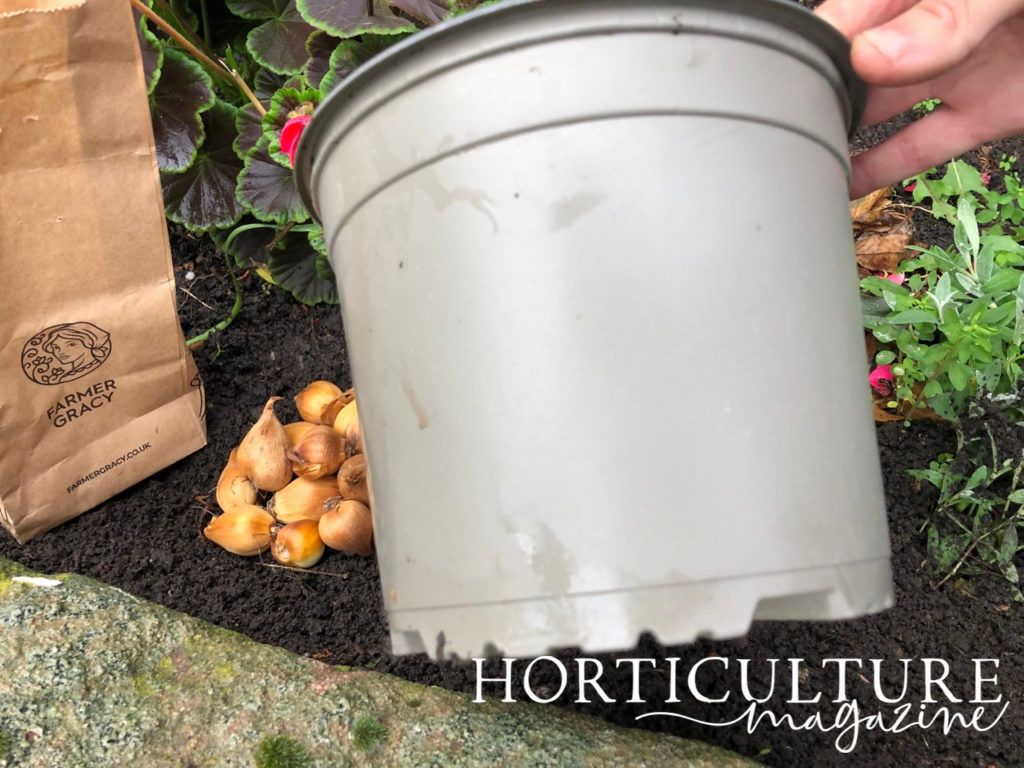
If you want to make an impact, it is generally best to plant spring bulbs in groups or drifts that are as large as possible, but there are limits to how many daffodils you can grow, even in a larger container.
Choosing a container that is as big as possible will allow you to plant enough daffodils together to make an impact.
A larger container (around 40-50cm in width and depth) will allow you to create a dramatic display of daffodils.
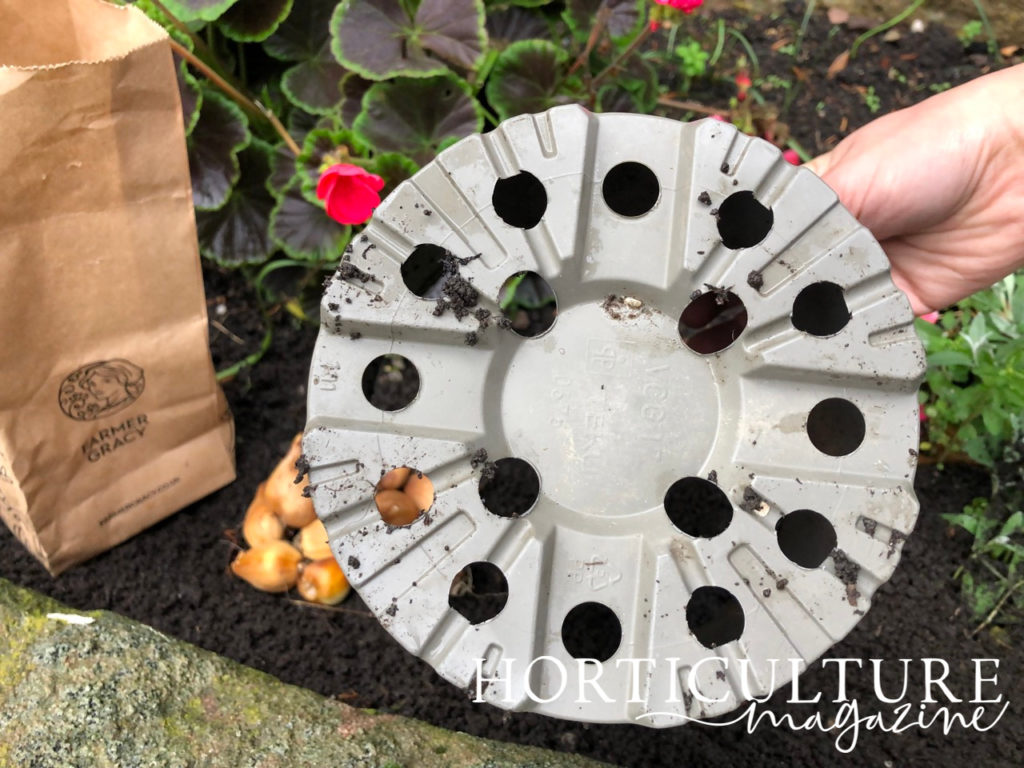
When choosing a container, remember that you don’t necessarily have to buy one.
You might make your own using reclaimed items or materials for a zero-waste, eco-friendly choice.
Make sure, whatever container you choose, that it has adequate drainage at the base because if bulbs sit in wet or waterlogged conditions over winter, they can rot.

What Is The Ideal Compost?
When choosing a compost or growing medium for spring bulbs, you don’t need to be too choosey.
Any general peat-free multipurpose compost or homemade equivalent will work well for daffodils and most other common spring bulbs.
However, drainage is important, so you might wish to add some grit to improve this.
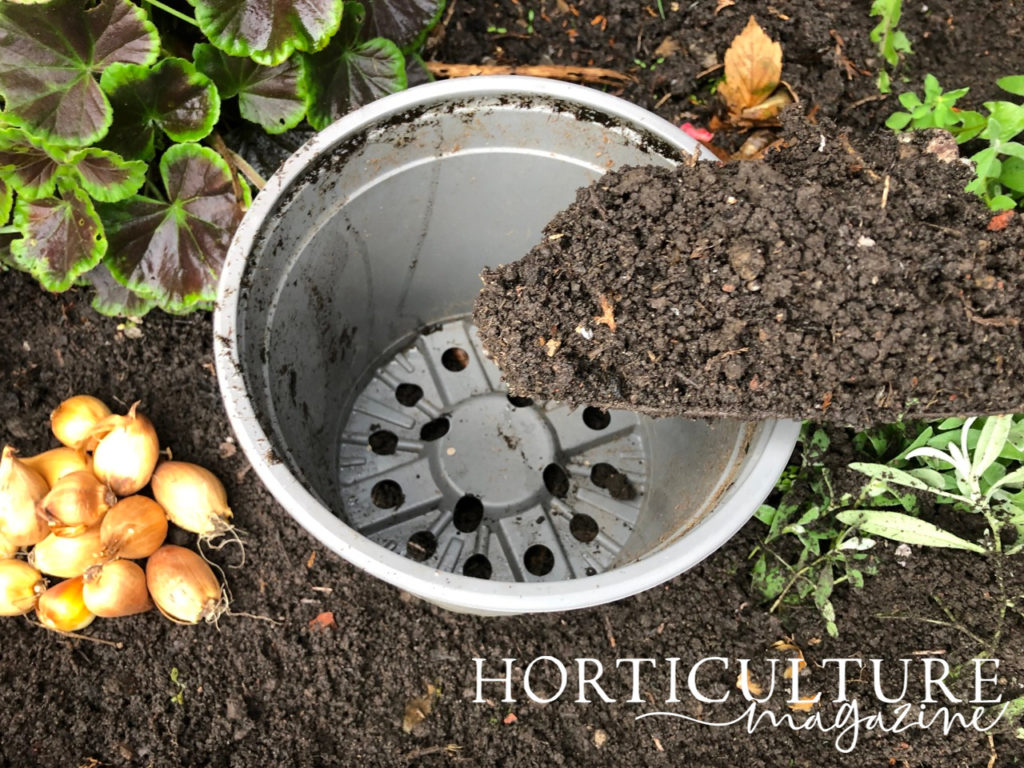
The mix should be different depending on whether the daffodil bulbs will remain in the container for a single season, or will be in the container long term.
If you wish to have daffodils flower over several years, rather than just for a single season as bedding, then it is a good idea to incorporate some loam or soil in the mix.
Purchase a peat-free compost with added John Innes, or add soil or loam to your homemade compost mix.
Potting Up
Daffodil bulbs are best planted in early to mid-autumn, ideally before September ends, but October can also be fine as long as you get to the job as soon as possible.

You should plant daffodils 3 times as deep as their own height, and when growing in a container, can space them quite closely – perhaps even as close as 1 bulb width apart from one another.
Spacing will depend on whether you want a seasonal display or one which you can continue to enjoy over a number of seasons.
Tighter spacing is fine for a short-lived display, but spacing a little more widely is best for a longer-lasting container planting mix.
“Daffodils need repotting frequently, as the nutrients from the soil get used up and composts lose their structure,” says Anne Wright, the owner of bulb specialist Dryad Nurseries.
“I repot my daffodils every year and I use deep pots if they are available for the best results.
“This is because bulbs can increase and break out of the pots if they are too small!”

Daffodils work particularly well within a container planting scheme often called a bulb lasagne.
This involves creating layers of bulbs within the container, either with daffodils with different bloom times or with a range of different spring bulbs that bloom at different times.
“As well as planting with other species you can create a daffodil lasagne using cultivars with different heights and flowering times, providing a container in flower from early to late spring,” says Master Horticulturist Colin Skelly.
“Using a spring flowering plant such as Myosotis sylvatica (Forget-me-not) also allows daffodils to punch through and flower above a lower layer of flowers.”
Daffodils are often planted as a middle tier within the stacked layers of a bulb lasagne.
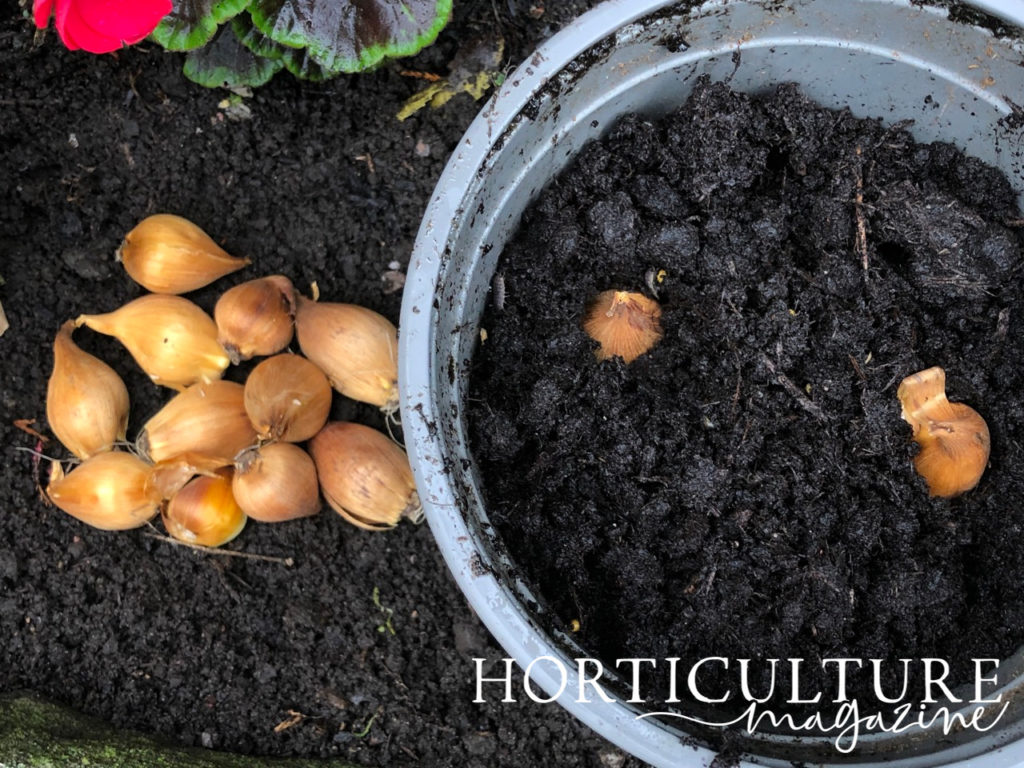
To plant daffodils within a bulb lasagne, you should first create a layer of your growing medium around 10cm deep in the base of the container.
On top of this, you will place your largest, late-flowering bulbs.
After covering these with more of the soil, place your daffodil bulbs, making sure that these are not directly above the bulbs in the bottom layer.
You will then cover these up with soil and repeat the process with the bulbs of the top layer, again making sure that the higher-up bulbs are not directly above those in the tiers below.
How Many Can You Plant Per Pot?
How many daffodils you can plant in a pot will of course depend on the size of that pot or container.
It will also depend on the variety you are growing and on which other bulbs or plants you might add to the same container.
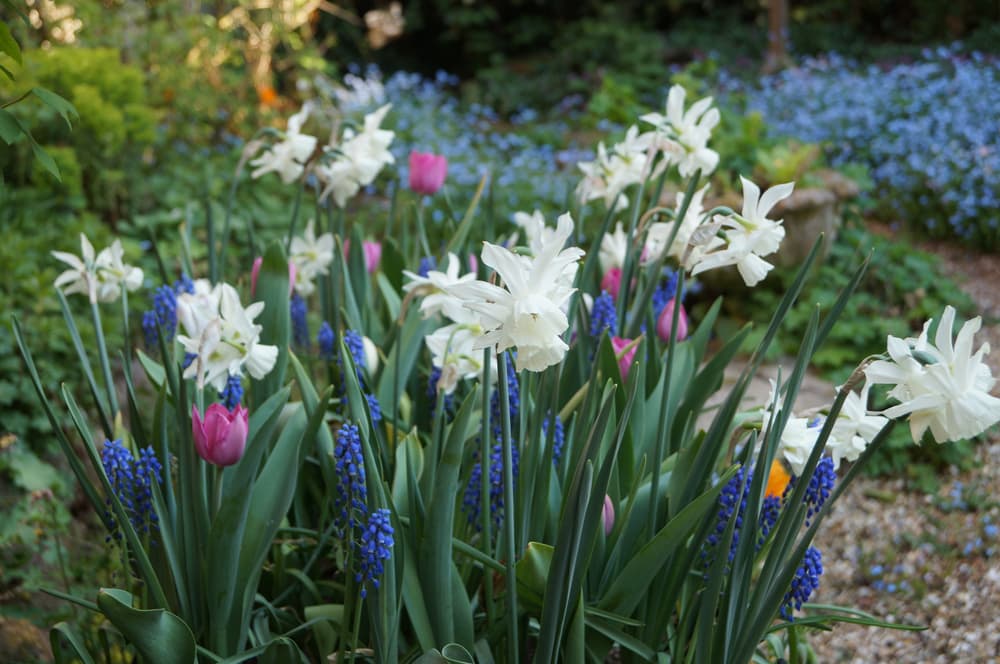
Remember, a bulb lasagne is just one option.
You might also combine daffodils in pots with a wide range of other plantings, as long as the daffodils still have the space to grow up and through.
Just make sure, if you want to enjoy displays over multiple years especially, that you do not overcrowd the container as this will weaken your plants.
Potted Daffodils Care
Over the winter, place your container in a sheltered spot, where high rainfall will not be an issue, such as in the lee of a wall or fence.
Consider placing mesh on the top of the container if squirrels or other pests are an issue where you live.

In spring, when green growth emerges, make sure you move your container so it receives plenty of sun.
Water well during dry periods during the period of active growth, but take care not to overwater and make sure excess water can drain away freely.
I’d recommend feeding daffodil bulbs in pots weekly with a high-potassium organic liquid plant fertiliser.
Do not cut off or restrain the green foliage after flowering, just let it die back naturally.

Otherwise, flowering may be sparse or at least less abundant the following year.
The leaves need to photosynthesise to gather energy to store in the bulb over winter so they can grow and flower the following year.
After 2-3 years, you will typically need to lift and thin bulbs to keep the display flowering well.
